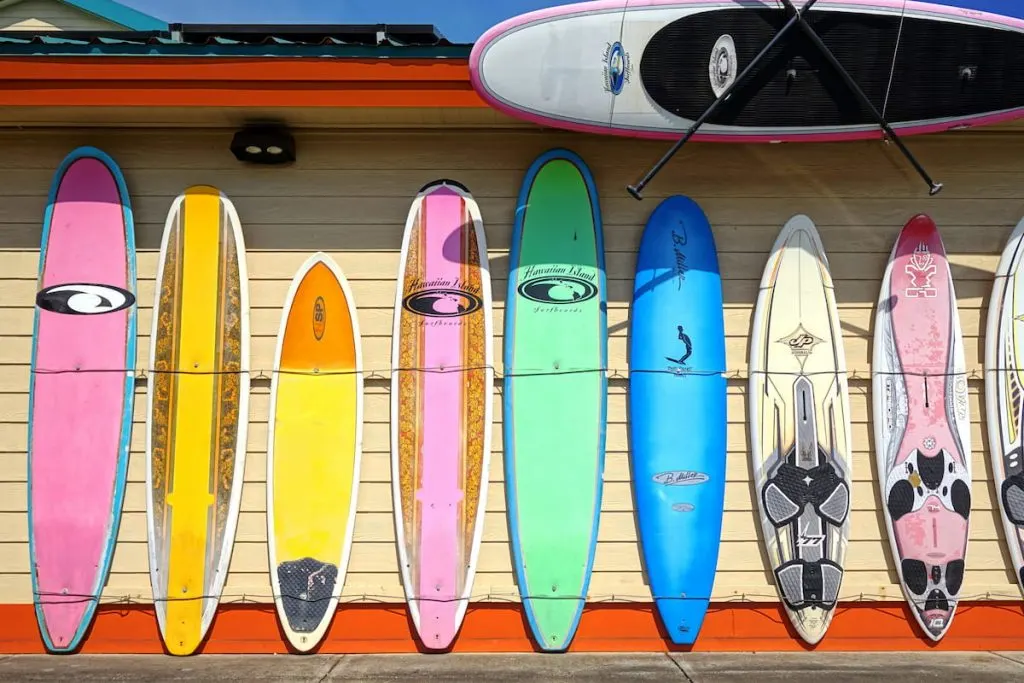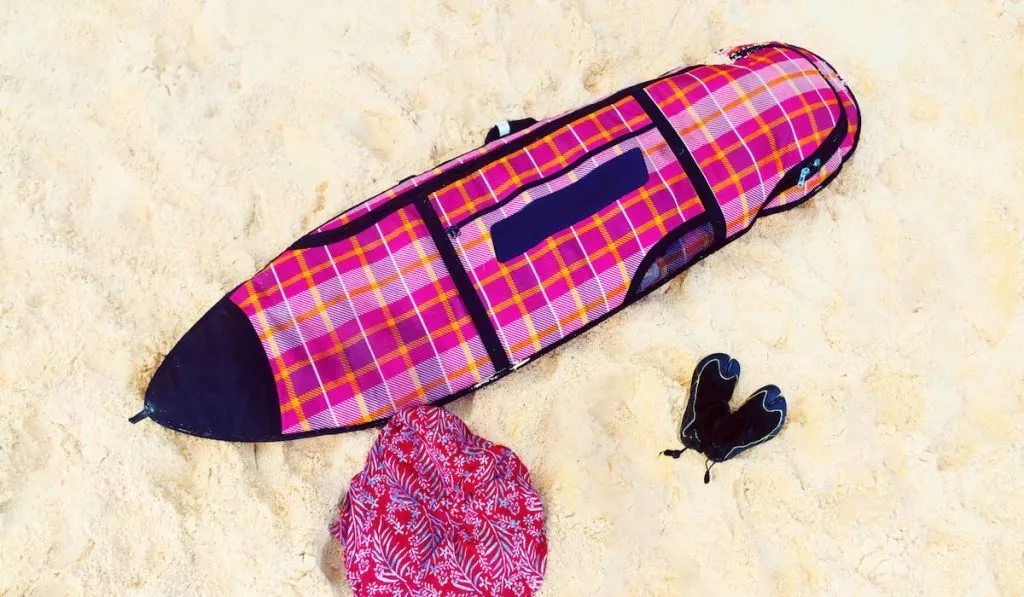I know surfboards are not cheap by any means. However, when a surfboard breaks, it’s more than just about the money. We adapt to our boards, and we adapt our boards to us.
So, when they break, we lose that connection, and we have to start all over again on a new board. That is why many people wonder how long a surfboard will last.
A surfboard that is surfed with often and in mild to heavy conditions will last around five years. If you only surf casually and in not heavy conditions, you can expect the board to last between 7 and 10 years if made from PU (fiberglass). But if it is made from EPS (epoxy), it can last up to 20 years.
When discussing surfboards and their lifespan, we need to keep in mind that the ocean is unpredictable. The ocean can also be unforgiving. What I am trying to say is there are many things to consider, and in this article, we want to give you a concise answer, so let’s jump into it.

How Long Will Your Surfboard Last?
There are 4 things to consider when answering this question:
- What is the surfboard made from?
- What stringer does the surfboard have?
- How often do you surf?
- In what conditions do you surf?
What Is The Surfboard Made From?
Most entry-level surfboards and above are made with relatively durable materials. They have to be when you consider that they have to endure one of the strongest elements on earth, the ocean.
As technology advances, we will see different kinds of boards coming out all the time.
At the moment, here are the three main types of boards classified by the material they are made from:
- Fiberglass (PU)
- Epoxy (EPS)
- Carbon Technology
Epoxy surfboards are considered to be premium. Not only do they offer better performance in most circumstances, but they also last longer. Unless you encounter an unexpected event like a heavy beach break wave snapping your board, you can expect an epoxy board to last up to 20 years.
Carbon fiber technology is starting to make its rounds in the most premium surfboards. Shapers are using carbon wrap over their epoxy boards, increasing their durability and also enhancing their performance. Sometimes, the carbon fiber also makes up the stringer of the board.
What Stringer Does The Surfboard Have?
A topic that gets overlooked by many people is the stringer in the surfboard. The stringer plays a significant role in the performance and lifespan of any surfboard.
There are three main types of wood used for surfboard stringers, whether you have a tri stringer or a single stringer board. Let’s take a look at these types of stringers and their characteristics.
| Balsa | Most common stringer type. Lightweight and flexible. |
| Cedar | Common wood used in American construction. Durable and lightweight. |
| Basswood | Soft and light |
| Carbon | Easily binds with epoxy and is ultra-light, flexible, and durable. |
In general, the more you pay for a board, the better the stringer will be and the longer the board will last.
However, if you want a custom board, you should speak to the shaper constructing it. They will advise you on what thickness, length, and material would best suit your circumstances.

How Often Do You Surf?
The more you use your surfboard, the shorter its lifespan will be. That is just an unfortunate reality.
If you are a casual surfer that surfs once or twice a week, well, your board isn’t taking much strain. However, if you are serious and surf more than four times a week, you can expect your board to last between five and seven years regardless of its material.
In What Conditions Do You Surf?
Before we start, there are two main types of surf breaks:
- Beach breaks: These can seem a lot friendlier than reef breaks. However, a beach break on a shallow bank can be just as devastating as a reef break. If you take a serious nosedive, you can snap the nose of your board relatively easily.
- Reef breaks: the most famous surf spots globally are reef breaks—for example, Pipeline, Chopu, and Shark Island. Going over the falls at Shark Island or Chopu on what seems like a dry slab of the reef can damage your board beyond repair; not all the time, but a lot of the time.
That said, most surfers spend most of their time in areas like San Diego, where the beach breaks are not too heavy.
Also, if you are lucky enough to live near Lajolla, California, then you have a reef break that is relatively mild most of the time. Travel up north to the wedge near LA, and you have a beach break that is famous for breaking boards and sometimes a few bones.

How To Make Your Surfboard Last Longer: 5 Easy Steps
In this section, I will not mention where you should not surf because surfing anywhere is pretty cool. Instead, I will talk about a few things you can do before and after riding that can increase the lifespan of your surfboard.
That said, here are our easy steps on how to make your surfboard last longer:
- Never leave your board in the sun: This step is always the first thing I mention. The sun can have a devastating effect on surfboards and bodyboards. It causes the board to form a rocker, and if you leave the board with the bottom facing up, you could end up with a reverse rocker. Having a reverse rocker makes the board extremely challenging to ride.
- Always rinse your board: When it comes to pretty much anything, the saltwater air can harm most of our stuff, whether your surfboard or your car, perhaps even your hair. So, rinse your board with fresh water after every surf session before packing it away.
- Use surf racks for your car: Getting a ding in your surfboard is never a good thing, especially when it happens on the bottom, as it can affect the way the board handles. Keeping a board on top of the car instead of the inside is the best option to prevent dings.
- Use a surfboard sock when traveling short distances: Not everybody wants to carry a large bag, especially when traveling only a few miles to the beach, but you should at least use a sock to add a layer of protection.
- Use a surfboard bag: I know a few surfers who put their board in a sock before putting it in their bag, regardless of how far they are traveling. However, it would help if you used a surfboard bag whenever you can to make use of the padding in the bag. It is even more critical when you are traveling long distances.
Final Thoughts
Looking after your stuff is easier said than done, especially when the condition of your item isn’t entirely in your control. However, if you follow our steps, you can prolong the lifespan of your board, and hopefully, after reading through this article, you should know roughly how long your board should last.
References
Here you can find a few references.
